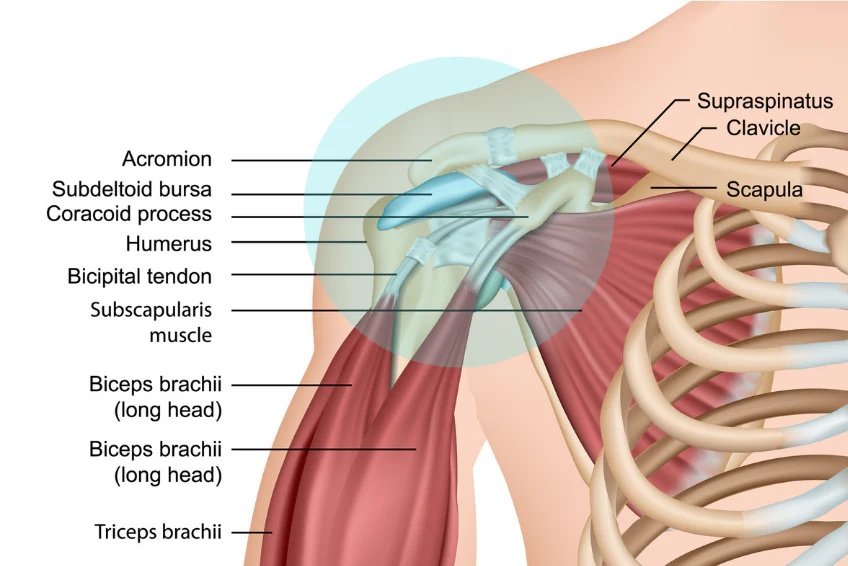Easy Exercises for Frozen Shoulder: Simple Moves That Really Help
If you’ve ever tried to reach behind your back and felt a sharp pain or noticed your shoulder just won’t move like it used to, you might be dealing with frozen shoulder. The technical name is adhesive capsulitis, but most people just call it what it feels like. Frozen. It can be frustrating, painful, and honestly a bit scary when you suddenly can’t do things you once did without even thinking.
The good news is that it can get better. And one of the most effective ways to manage frozen shoulder is with targeted frozen shoulder exercises. In this article, we’ll walk through the basics of frozen shoulder, what symptoms to look out for, and most importantly, which exercises can help bring back your range of motion and reduce the pain. Whether you’re in the early stages or you’ve been dealing with it for a while, these exercises are simple, practical, and supported by science.
Let’s get into it.
What Is Frozen Shoulder?
Frozen shoulder happens when the connective tissue surrounding your shoulder joint becomes thickened and inflamed. Over time, this causes stiffness and pain, and makes it harder to move the shoulder. It tends to develop gradually, but once it kicks in, the stiffness can become quite limiting. It often affects people between the ages of 40 and 60 and is more common in women than men.
There are usually three stages of frozen shoulder. The first is the freezing stage. This is when shoulder pain begins and movement starts to feel limited. The second is the frozen stage, when pain may decrease slightly but stiffness becomes more pronounced. Finally, there’s the thawing stage, when range of motion slowly starts to return.
Knowing how to identify frozen shoulder symptoms early can really help in starting treatment before things become too restricted.
Frozen Shoulder Symptoms to Watch For
If you’re not sure whether you have frozen shoulder or just a sore shoulder from sleeping wrong or overuse, here are a few symptoms that are common with frozen shoulder:
Gradual onset of shoulder stiffness
Deep, aching pain in the outer shoulder and upper arm
Difficulty reaching overhead or behind your back
Pain that gets worse at night
Reduced range of motion that does not improve with rest
These symptoms can show up in one shoulder or both, although it usually starts on one side. If any of this sounds familiar, the sooner you start with frozen shoulder exercises, the better the outcome is likely to be.
Why Exercises Are Key to Frozen Shoulder Recovery
There’s no magic pill for frozen shoulder. In many cases, the best treatment is movement. According to a 2021 systematic review, exercise therapy is highly effective for improving range of motion, reducing pain, and restoring function in patients with frozen shoulder.
Another study published on PMC emphasized that physical therapy focused on controlled movement and gentle stretching significantly supports frozen shoulder recovery. That’s why many physiotherapists recommend starting a set of daily exercises early on.
That said, not all exercises are appropriate in every stage of recovery.
In the painful or “freezing” phase, where night pain is common and there’s intense discomfort at the end range of movement, you should avoid sustained stretches. Trying to push through the pain or hold deep stretches during this stage can actually make things worse. Instead, focus on gentle movement within a pain-free range. The goal here is to keep the joint mobile without triggering inflammation or additional pain.
Once the pain starts to ease and stiffness becomes the main issue, that’s when stretching can be gradually introduced. This shift in approach is important because the wrong type of exercise at the wrong time can slow progress or cause setbacks.
So yes, movement is key, but timing and technique matter just as much. These exercises don’t have to be intense or complicated. They just need to be consistent and adapted to your stage of recovery. Over time, they help your shoulder become more mobile and less painful.
Let’s take a look at some of the most effective frozen shoulder exercises you can try at home.
Frozen Shoulder Exercises You Can Do Daily
1. Pendulum Swings
Start by leaning forward slightly and letting your affected arm hang down freely. Gently swing your arm in small circles. Do this in one direction for about 30 seconds, then switch to the other direction. You can also swing the arm forward and backward or side to side. These movements should be gentle and pain-free.
Pendulum swings are often used early in the recovery process because they allow movement without placing too much strain on the joint.
2. Finger Walk
Stand facing a wall, just a short distance away. Using your fingertips, slowly walk your hand up the wall as high as you can go without pain. Once you’ve reached your limit, slowly walk your fingers back down. Try to repeat this about 10 to 15 times.
This exercise helps with reaching and overhead movement, both of which are commonly restricted in frozen shoulder.
3. Towel Stretch
Grab a small towel or resistance band. Hold it with both hands behind your back. The hand on the affected side should be at the bottom, and your good hand should hold the top. Gently pull the towel upward with your good hand, lifting your affected arm in the process. Hold this for a few seconds, then release. Repeat 10 to 15 times.
This move stretches the shoulder internally and externally and helps improve flexibility.
4. Cross-Body Stretch
You can do this sitting or standing. Use your good hand to bring your affected arm across your body. Hold the elbow or forearm gently and pull it closer to your chest. Hold the stretch for 15 to 20 seconds and repeat several times.
This exercise is great for working on rotational movements and can help reduce shoulder tightness over time.
5. Armpit Stretch
Stand next to a surface like a table or counter. Place your affected arm on the surface with the elbow bent. Slowly bend your knees to lower your body, letting the arm stretch passively. The goal here is to open up the armpit area and gently stretch the shoulder capsule.
Do this slowly and hold for a few seconds at the lowest point. Stand back up and repeat the process about 10 times.
Tips to Make Your Exercises More Effective
While doing your frozen shoulder exercises regularly is important, how you do them also matters. Here are a few tips to make the most of your recovery process:
Always warm up the shoulder with a warm towel or heating pad for 10 to 15 minutes before starting. This helps loosen up the tissue and makes stretching easier.
Don’t force any movement. If something feels sharp or painful, back off and try again later. These exercises should be gentle.
Stay consistent. Doing your exercises once or twice and stopping won’t give results. Aim to do them daily or as advised by your physiotherapist.
Use proper posture while performing exercises. Slouching or overcompensating can put strain on other parts of the body.
Breathe normally while stretching. Holding your breath can make you more tense and reduce the benefit of the stretch.
When to See a Physiotherapist
Home exercises are a great place to start, especially for mild to moderate cases. But if your frozen shoulder symptoms aren’t improving or you’re finding it hard to complete even the easiest movements, it’s time to seek professional help.
A physiotherapist can guide you through a custom frozen shoulder recovery plan that’s tailored to your needs. They may also use hands-on techniques, joint mobilization, or modalities like ultrasound therapy to support healing.
In some cases, particularly when range of motion is extremely limited, medical interventions like corticosteroid injections or hydrodilatation might be suggested alongside exercise therapy. However, movement remains the foundation of recovery.
What Recovery Looks Like
Frozen shoulder recovery is a process, not a quick fix. On average, it can take several months to regain full mobility, with some people needing up to a year to feel completely back to normal. The good news is that with the right approach, the vast majority of people do recover.
As noted in this clinical model for guiding frozen shoulder rehabilitation, exercises play a central role throughout all stages of the condition. Whether you are just beginning to notice frozen shoulder symptoms or are in the middle of the frozen stage, staying consistent with your routine can make all the difference.
Frozen shoulder might slow you down, but it doesn’t have to stop you. With the right frozen shoulder exercises and a steady approach to movement, you can regain your strength, flexibility, and comfort. From pendulum swings to cross-body stretches, these gentle exercises are easy to include in your daily routine and don’t require any special equipment.
Frozen shoulder recovery takes time and patience, but every bit of movement adds up. Don’t wait until the stiffness takes over. Start moving, stay consistent, and work with a physiotherapist if needed. Your shoulder will thank you for it.
Studies:
Chan HBY, Pua PY, How CH. Physical therapy in the management of frozen shoulder. Singapore Med J. 2017 Dec;58(12):685-689. doi: 10.11622/smedj.2017107. PMID: 29242941; PMCID: PMC5917053. https://pmc.ncbi.nlm.nih.gov/articles/PMC5917053/
Michel G. Mertens, Lotte Meert, Filip Struyf, Ariane Schwank, Mira Meeus, 2022. Exercise therapy is effective for improvement in range of motion, function, and pain in patients with frozen shoulder: A systematic review and meta-analysis. Archives of Physical Medicine and Rehabilitation. https://www.sciencedirect.com/science/article/abs/pii/S0003999321013666
Martin J. Kelley, Phillip W. Mcclure, Brian G. Leggin (2009). Frozen shoulder: Evidence and a proposed model guiding rehabilitation. Journal of Orthopaedic & Sports Physical Therapy, 39(3), 135–148. https://www.jospt.org/doi/10.2519/jospt.2009.2916



